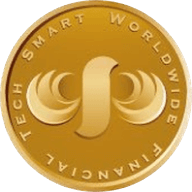Band Protocol (BAND) aide les blockchains et les projets à accéder aux données du monde réel via la cross-chaîne oracles. L’écosystème soutient des smart contracts et interfaces de programmation d’applications (API), en permettant aux utilisateurs de connecter les innovations en chaîne avec les informations hors chaîne d’une manière décentralisée et sans serveur.
Qu’est-ce que c'est Band Protocol
Band Protocol est une solution décentralisée Oracle conçue pour éliminer les dépôts de données centralisés. Il fonctionne comme une solution Layer 2 au-dessus de la Cosmos (ATOM)blockchain, en fournissant off-chaîne data à on-chaîne apps décentralisées (dApps).
Initialement lancé sur Ethereum En 2019, le protocole de bande a été transféré à la Cosmos chaîne en 2020, en tirant parti du kit de développement logiciel Cosmos pour alimenter sa chaîne native, BandChain.
L’équipe de Band Protocol
L’équipe de Band Protocol est dirigée par Soravis Srinawakoon, qui est le PDG en exercice. D’autres membres clés de l’équipe comprennent Paul Nattapatsiri comme CPO, Sorawit Suriyakarn comme CTO et co-fondateur, Sirada Lorhpipat contribuant au développement des affaires et Satawat Thitisupakul comme ingénieur logiciel.
Comment fonctionne Band Protocol
L’écosystème de Band Protocol se compose de deux participants principaux: les fournisseurs de données et les validateurs. Les fournisseurs de données collectent des données Oracle provenant de sources fiables sur la chaîne et les fournissent au protocole. Les validateurs jouent un rôle crucial en vérifiant l’authenticité des données et en les alimentant dans les contrats intelligents pertinents pour l’utilisation. Tout comme d’autres projets comme Theta Network (THETA), Band Protocol se vante d'un système de tokens double comprenant les tokens BAND et Dataset.
Le token natif de Band Protocol: BAND
BAND est le token natif de l’écosystème de Band Protocol. Les tokens peuvent être délégués aux validateurs de réseau, à la gouvernance et au staking.
L’offre totale de tokens BAND est limitée à 100 millions. L’économie des tokens de BAND suit un modèle inflationniste, qui peut être attribué au minting de nouveaux tokens pour inciter et récompenser les fournisseurs de données et les validateurs au sein de l’écosystème de Band Protocol.
Comment faire du staking sur BAND?
Pour faire du staking sur BAND sur le mainnnet BandChain, il y a deux options disponibles: vous pouvez devenir un validateur en exécutant un nœud et en participant activement au réseau, ou vous pouvez choisir de devenir un délégué et de déléguer vos tokens BAND à un validator de votre choix. Quelle que soit la méthode de staking que vous choisissez, vous recevrez des tokens BAND comme récompenses pour votre contribution à l’écosystème de Band Protocol.
Alternativement, vous pouvez choisir de faire du staking sur OKX Earn.
OKX Earn offre des plans de staking de BAND flexibles pour un APY estimé. Staking est facile sur OKX Earn pour commencer à recevoir des récompenses. Vous pouvez cesser de faire du staking à tout moment.
Cas d'utilization BAND
Les tokens BAND offrent diverses fonctionnalités au sein de l’écosystème de Band Protocol. Ils agissent en tant que garanties pour garantir que les fournisseurs de données fournissent des données fiables au network. En outre, les tokens BAND accordent aux détenteurs la possibilité de participer à la governance en votant sur les propositions. De plus, les tokens BAND contribuent à la sécurité du network car les détenteurs ont la possibilité de déléguer leurs tokens aux validateurs, en assurant l’intégrité et la stabilité du network.
Distribution de BAND
Les tokens BAND sont distribués comme suit :
- 25 % à la Fondation Band pour le développement du protocole
- 20 % des ventes publiques
- 23,5 pour cent à l'équipe, avec une période de vêtement
- 21,5 % en tant que tokens d’engagement communautaire
- 10 % au trésor de l’écosystème
L'état actuel de Band Protocol
Band Protocol met l'accent sur la sécurité du réseau, en utilisant la tolérance aux erreurs byzantines (BFT), délégué Proof of Stake (dPoS), et un réseau robuste de validateurs pour sécuriser BandChain. Il est reconnu comme un acteur important dans l'espace Oracle, aux côtés de projets tels que Chainlink (LINK). En outre, le groupe a établi un partenariat de collaboration avec Horizen (ZEN) dans le cadre de son initiative de sourcing de données hors chaîne.

















